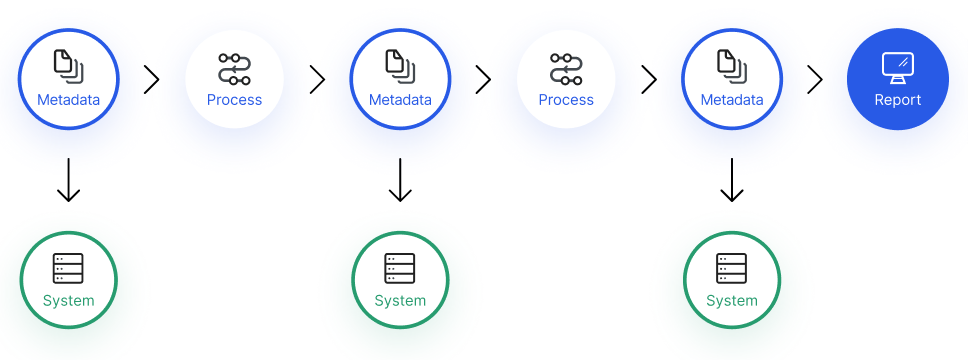How does an MIS Support Data Lineage Tracking

Data lineage tracking is essential for understanding the origins, transformations, and movement of data within a Management Information System (MIS). Here's how an MIS typically supports data lineage tracking:
Metadata Management: MIS systems maintain metadata repositories that capture information about the structure, source, and transformations applied to data. This metadata includes details such as data source locations, data formats, data transformations, and timestamps. By storing this metadata, the MIS can track the lineage of data throughout its lifecycle.
Data Integration and Transformation Logging: MIS systems log data integration and transformation processes, including data ingestion, cleansing, enrichment, and aggregation. These logs capture details such as the source data used, the transformations applied, and the resulting output data. By analyzing these logs, users can trace the lineage of data from its original sources to its final destination.
Data Movement Tracking: MIS systems track the movement of data between different storage locations, databases, and processing stages. This includes recording details such as data transfers, data exports, data imports, and data replication events. By monitoring data movement, the MIS can provide visibility into how data flows through the system and identify potential bottlenecks or data quality issues.
Data Versioning and Lineage Visualization: MIS systems support data versioning and lineage visualization features that enable users to track changes to data over time and visualize the lineage relationships between different data elements. These features allow users to explore the history of data modifications, understand dependencies between datasets, and trace the impact of changes on downstream processes.
Comprehensive Audit Trails: MIS systems maintain comprehensive audit trails that record user interactions with data, including data access, data modifications, and data lineage inquiries. These audit trails capture details such as user identities, timestamps, and the actions performed on data. By auditing user activities, the MIS ensures data integrity, security, and compliance with regulatory requirements.
Data Lineage APIs and Interfaces: MIS systems provide APIs and interfaces that enable developers to programmatically access data lineage information and integrate it with other applications or tools. These APIs allow developers to build custom data lineage tracking solutions, automate data lineage inquiries, and integrate data lineage information into external reporting or analytics platforms.
Data Quality Monitoring: MIS systems monitor data quality metrics and anomalies as part of data lineage tracking. By analyzing data quality metrics such as completeness, accuracy, consistency, and timeliness, the MIS can identify data lineage issues such as missing data, data inconsistencies, or data discrepancies. This helps ensure that data lineage information remains reliable and trustworthy.
Overall, an MIS supports data lineage tracking by leveraging metadata management, data integration and transformation logging, data movement tracking, data versioning and lineage visualization, comprehensive audit trails, data lineage APIs and interfaces, and data quality monitoring capabilities. These features enable users to trace the lineage of data, understand its provenance, and ensure data integrity, reliability, and compliance within the MIS environment.
Thank you,
